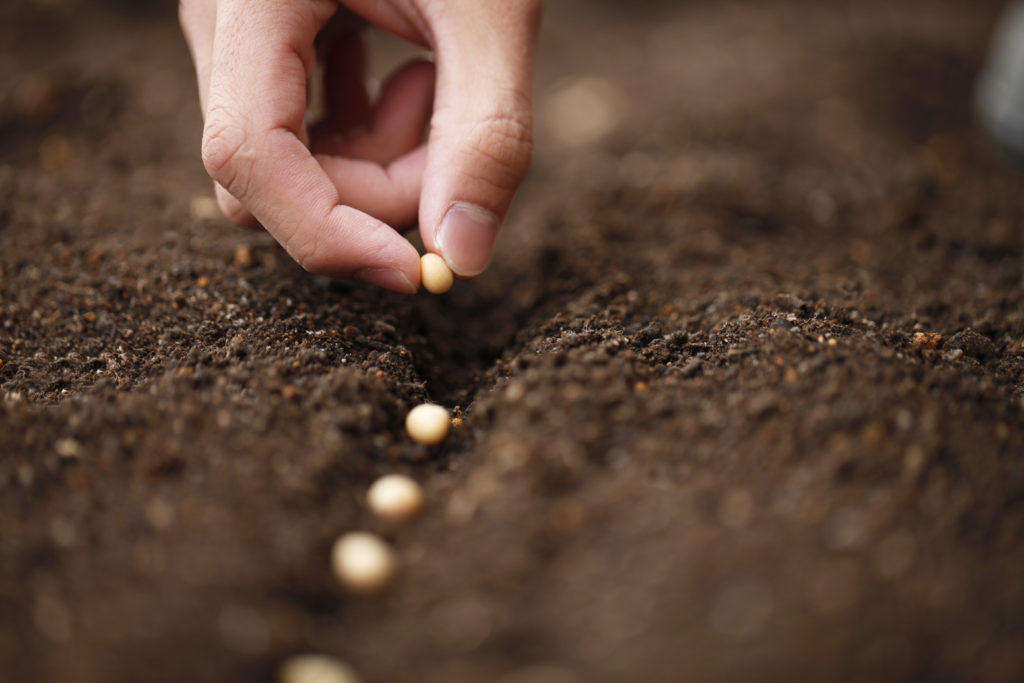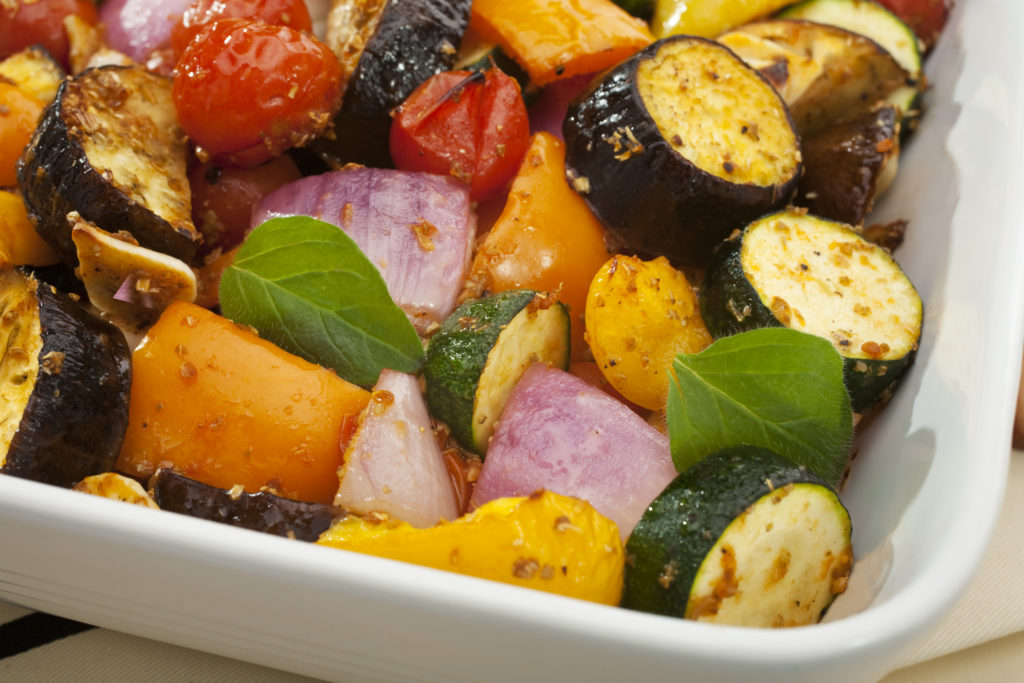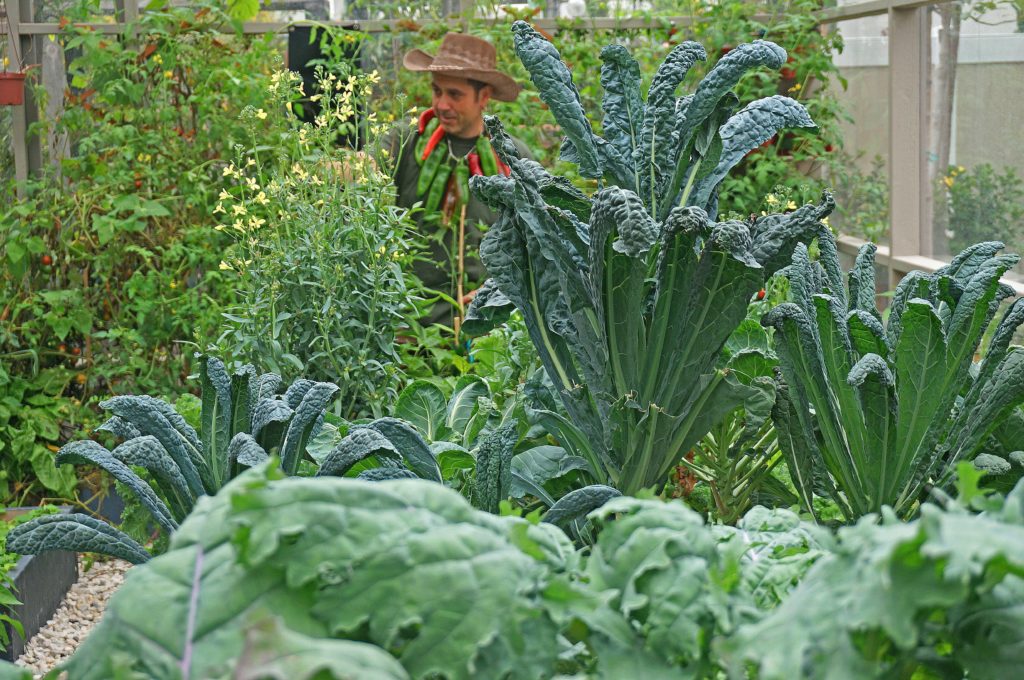It’s unfortunate that we live and learn rather than learn and live! This is exactly what I wrote about in my recent blog post “Visualize Total Healing.” I have since recognized that although there may be a genetic component to my serious health condition (glaucoma), the diagnosis nevertheless brought me to a new understanding of the foods I eat and how often I eat them.
I’m fortunate in that I love most foods, and for many years I’ve followed the diet philosophy of the Weston A. Price Foundation and Nourishing Traditions by Sally Fallon Morrell. However, I admitted in my blog post that there was one major missing component in my diet—green foods and veggies in general. I ate some of these foods but not nearly enough, which may have impacted my health and led to the glaucoma diagnosis. I was inspired to write about this experience so I could relay to my readers the importance of eating green foods and other nutrient-dense vegetables.
In making the turnaround to embrace vegetables, I had to think through how I could start incorporating more than a small side dish of broccoli, Brussels sprouts, carrots, etc., or an occasional salad to my regular meal. Looking back, I see now that I was more of a meat and complex carb eater. I’m also an avid maker and consumer of homemade probiotics. Excluding leafy greens and other nutrient-dense vegetables is probably how many of you are also approaching your veggie intake—with little interest, right? But tiny portions aren’t nearly enough to help prevent serious illnesses that are associated with a lack of nutrients normally provided by veggies.
The end result of my thinking is “all veggie meals—twice a week.” Why twice a week? No particular reason, but I find this is sufficient for myself. I also incorporate vegetables in other ways, like adding them to my eggs and bacon in the morning or tossing them in a daily green smoothie to drink alone or with a meal. It’s been a super tasty and easy way to give my body what it’s been missing out on for so many years.
How about you? Why not try some of the suggestions below and see how your energy and well-being noticeably improves.
A Serious Study of Veggies
Like putting a puzzle together for the first time, I suddenly realized that the vegetables in my diet consisted mostly of steaming a few broccoli spears or some other veggie, buttering them up, and slapping them on my plate! No real thought about their nutrition or various other ways I could prepare them. All I could recall was that constant admonishment from my mom to “eat your vegetables.” (Smile) Many of today’s parents still say the same thing, but they rarely explain to their children that vegetables are important because of their nutrients, let alone make them fun to eat.
The first thing I did was make a serious study of the nutritional value of different kinds of vegetables, and I then cross-referenced that information with what part of the body are best nourished by what vegetables. Below, you will find my research on just a few of the vegetables that are highly recommended for both the eyes and our bones, two areas that many people seek healing for.
I trust that if you try my method of eating all veggie meals—twice a week, you may also want to study up on other vegetables, whether for your eyes or bones, or other areas of your body that need healing or strengthening. My search was simple. All I needed to do was enter this question into my browser: “What vegetables are best for (body part).”
But first, a quick note about our soil: The healthier our soil is, the more nutrient-dense the plants grown in that soil will be. Unfortunately, most of our soil is far from healthy. To stimulate robust plant growth, commercial farmers first sterilize the soil and then fortify it with nitrogen, phosphorous, and potassium (NPK). This helps the plant grow within certain parameters pleasing to the commercial farmer, but these parameters are so out of balance that the plants quickly lose their immunity to insect, fungi, and parasites. 
To protect the plants from the results of their weak immunity, the farmer must now apply pesticides and chemo-sterilants, which are toxic at every level. NPK is a Faustian bargain that has led to the undoing of healthy agriculture for both the environment and humanity. To get the most nutrition and the least toxic chemicals, try to grow as much of your own produce as you can, and buy organically grown from trusted sources when you can’t.
Let’s now discuss nutrition for our eyes and bones.
Veggies for Those Precious Eyes
In doing research for this blog post, I came across this nice slideshow on WebMD about foods that are good for our eyes. I discuss a few of the vegetables on the list below, but I recommend watching the full slideshow to learn about some other foods that can maintain or improve eye health. You’ll find some encouraging nutritional information.
Raw bell peppers: High in vitamin C, bell peppers are good for the blood vessels in our eyes, and some studies suggest they can lower the risk of cataracts. Heat breaks down vitamin C, so it’s best to eat bell peppers raw. Other vegetables high in vitamin C include bok choy, cauliflower, papayas, and strawberries. Bell peppers also contain A and E.
(Personal note): I love bell peppers baked or in a soup, so I simply supplement with Cataplex C. This is the whole vitamin C complex, not just ascorbic acid—which is just the protective wrapper around the C complex but not vitamin C.)
Dark, leafy greens: Kale, Brussels sprouts, spinach, and collard greens all contain high amounts of vitamins C, E, and K—but their true value is their lutein and zeaxanthin (which the body can’t make on its own). Dark, leafy greens are especially effective in lowering the risk of chronic eye diseases, including age-related macular degeneration (AMD) and cataracts, but the Western diet is seriously lacking in these high-nutrient vegetables.
Sweet potatoes: Along with carrots, cantaloupe, mangos, apricots, and other orange-colored veggies, sweet potatoes are high in vitamin A, which makes them important for night vision. Sweet potatoes are another vegetable high in vitamin C.
Squash: Another important vegetable containing lutein and zeaxanthin. Your best bet is to eat squash throughout the year. Summer squash provides vitamin C and zinc, while winter squash contains A and C as well as omega-3 fatty acids.
Veggies for Those Precious Bones
Here is a quote from a Healthline article on natural ways to build healthy bones (feel free to read the full article for more great information on bone health):
“Vegetables are great for your bones…They’re one of the best sources of vitamin C, which stimulates the production of bone-forming cells. In addition, some studies suggest that vitamin C’s effects may protect bone cells from damage…Vegetables also seem to increase bone mineral density …A high intake of green and yellow vegetables has been linked to increased bone mineralization during childhood and the maintenance of bone mass in young adults…A study in women over 50 found those who consumed onions most frequently had a 20% lower risk of osteoporosis, compared to women who rarely ate them.”
When it comes to preventing bone-deteriorating illness, we need to get the following nutrients in our diet, even as small children: calcium, magnesium, vitamin K, and vitamin D. I will discuss supplementation below, but let’s first take a close look at the vegetable angle.
Salads and leafy greens: Here is a quote from Everyday Health (emphasis mine): “Make green your new favorite color. Your salads and steamed greens are packed with bone-building nutrients, particularly calcium, magnesium and vitamin K. Vitamin K is critical in forming bone proteins and cuts calcium loss in urine. Too little of this fat-soluble vitamin increases risk of hip fractures, research shows. Just one cup of raw or a half-cup of cooked greens provides several times the recommended intake of 90 micrograms per day.”
Note: I found the following lists of vegetables that are good for bone health at the website Bone & Joint. For further understanding of the specific nutrients in each vegetable, visit the World’s Healthiest Foods.
Great magnesium-containing vegetables: artichokes, avocados, beet greens, collard greens, okra, plantains, potatoes, spinach, sweet potatoes, Swiss chard, and tomatoes (technically a fruit, but eaten as a vegetable).
Great vitamin K-containing vegetables: asparagus, avocados, bell peppers, broccoli, Brussels sprouts, green beans, green peas, kale, parsley, romaine lettuce, spinach, Swiss chard, and watercress.
Great calcium-containing vegetables: broccoli, Chinese cabbage, collard greens, dandelion greens, kale, mustard greens, okra, turnip greens.
Putting It All Together
Cooking all-vegetable meals doesn’t mean they need to be meatless. This isn’t a vegetarian plan, but the meals do need to be primarily veggies. I consume at least three or four different veggies per meal, and I make it fun by color-coordinating them. For toppers, add some crispy nuts shown in my DVD Cook Your Way to Wellness, sprinkles of raw cheese, sliced boiled eggs, or bits of beef, chicken, sardines, or salmon for a good way to get some needed protein. Just keep in mind that the topper portion should only be approximately 5 percent of the veggie meal. Adding a green kale smoothie as a beverage can supply leafy greens for those who, like me, prefer leafy greens as a liquid (see my Kale Smoothie recipe below).
You can find numerous recipes for traditional dishes that incorporate vegetables in the entrée, including stir fries, soups, frittatas, or a lovely niçoise salad or cobb salad. Vegetables deserve a seat at the table, as the entrée!
Cooking Choices
I often steam most of my veggies because it’s so easy to use my steamer. However, now that I’m creating color-coordinated veggie meals, I’ve also started baking some of my veggies. And, of course, I always eat some veggies in their raw form.
I highly recommend clicking on the valuable and teachable links above to learn what veggies are best served steamed, baked, or eaten raw (and it especially important to remember that fermented vegetables are a highly nutrient way to eat raw veggies). With this information you’ll be 100 percent ready to plan your veggie meals twice a week. You may want to prepare your family so everyone is onboard or see if anyone wants to contribute healthy new meals of their own. This is a great opportunity to have fun, whether you’re cooking for family or even just for one.
Recommend Supplements for an Additional Nutritional Boost
- Cruciferous Complete: My choice green food supplement.
- Catalyn: My choice multivitamin supplement.
- Calcifood Powder: My choice bone supplement.
- Calcium Lactate Powder: My choice calcium/magnesium supplement.
Kale Smoothie
This smoothie may be divided for 2 servings. Use within a day or freeze one portion for later use.
Ingredients
1 bunch kale
1½ cups bone broth or raw milk
1–2 garlic cloves
½ teaspoon mineral salt
2 teaspoons organic butter
Instructions
Steam kale bunch for approximately 15 minutes. Drain water and squeeze until it is more or less water free. Place in a Vitamix (preferred) or blender. Add bone broth or raw milk and garlic cloves. Blend until liquid. Place liquefied kale, salt, and butter in a pan. Warm to taste. Pour into your favorite mug and enjoy.
[xyz-ihs snippet=”Begin-Authors-Note”]Afterthoughts from the Traditional Cook
Bill of Vegetable Rights, or “We, the Vegetables”
It is our duty and our privilege to once and for all declare our Bill of Rights as vegetables. For too long we have maintained a dignified silence in the face of human neglect, abuse and outright insult bordering on the libelous. For 10,000 years we have nourished ungrateful people with uncountable harvests of delectable, nutritious food. Humankind must now grant vegetables the respect, consideration and care we merit. For far too long, humans have relegated us to the side dishes of life. In the theatre of cuisine, vegetables serve as supporting players with mere walk-on roles, rather than the culinary stars we surely are.
The Congress of Vegetables hereby claims our God-given rights, and demands that people at last respect us for not only our nutritional value, flavor and texture, but also our distinctive personalities and panoply of colors and shapes. Our human friends must acknowledge the indispensable role vegetables have played in their history and survival. Consider this: were it not for annual vegetables, people would not exist. Chew on that!
—George Bail Jr. from Burpee Seeds (quoted by David Grotto’s Nutritional Housecall blog)
Disclaimer from Maria Atwood, CNHP: I am a Certified Natural Health Professional, CNHP, not a medical doctor. I do not diagnose, prescribe for, treat, or claim to prevent, mitigate, or cure any human diseases. Please see your medical doctor or health practitioner prior to following any recommendations I make in my blog posts or on my website.
Images from iStock/Choreograph (main), dentok (kale), travellinglight (roasted vegetables), kazoka30 (soil).






